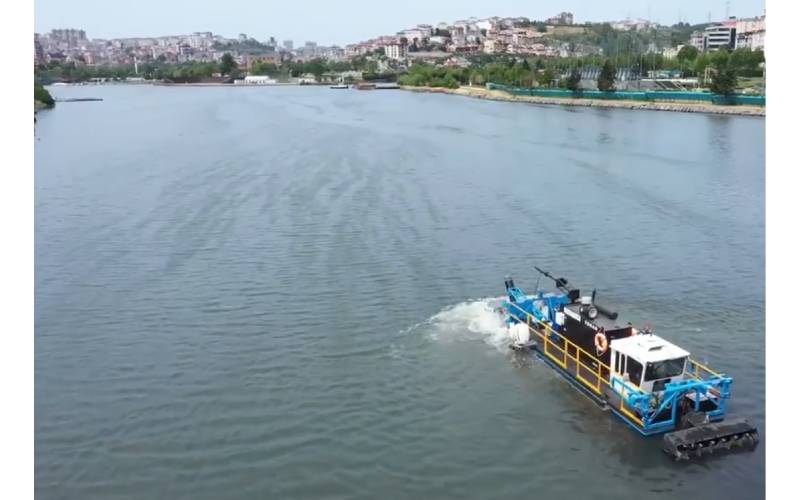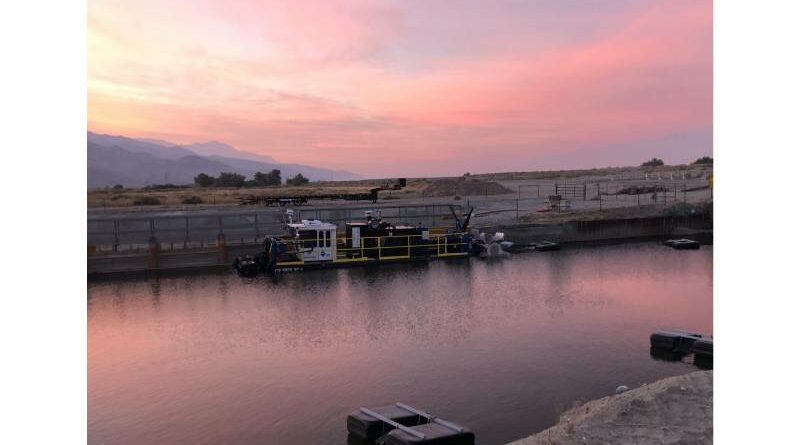How Lake Dredging Affects the Water Depth and Hydrodynamics?
Lake dredging plays a vital role in maintaining the ecological balance and ensuring that lakes continue to serve their intended purposes, such as recreation, irrigation, flood control, and habitat for aquatic life. The process involves removing accumulated sediment, debris, and organic material from the lakebed, which can significantly impact the water depth and hydrodynamics. Understanding these effects is essential for managing a healthy and sustainable water body. In this article, we will delve into how lake dredging influences water depth, hydrodynamics, and the broader ecological system.
Understanding Lake Dredging
Before examining the effects, it’s essential to understand what lake dredging involves. Lake dredging is a mechanical process where sediment and silt that accumulate over time are removed from the bottom of a lake. This sediment can include mud, sand, plants, and other organic matter, all of which can affect the overall function of the lake. A lake dredge is a specially designed vessel or machine equipped with powerful excavation tools used to scoop or suction up the sediments from the waterbed.
Dredging is typically undertaken for several reasons, including improving water quality, increasing navigational depth, restoring aquatic habitats, and preventing excessive flooding due to sediment build-up.

Impact Of Lake Dredging On Water Depth
One of the most immediate and visible effects of lake dredging is the increase in water depth. Over time, lakes naturally accumulate sediment from surrounding areas, such as soil erosion, decaying plant matter, and organic waste. This sediment builds up at the lake’s bottom, which leads to a gradual reduction in the overall depth. As sediment accumulates, the lake may begin to fill in, which can lead to issues such as reduced water volume, poorer water quality, and limited aquatic life capacity.
By removing the sediment and other debris through dredging, the lake’s depth is restored. This deepening effect has several important consequences:
- Increased Water Volume: As sediment is removed, the lake’s overall volume increases, which can be beneficial for flood control, especially in areas where seasonal rainfall or snowmelt may cause the water level to rise quickly.
- Improved Water Flow: A deeper lake allows water to circulate more freely. This deeper basin promotes better water retention and can help maintain stable water levels during dry periods.
- Enhanced Navigation: In lakes used for boating, fishing, or other recreational activities, dredging helps maintain an adequate depth for safe navigation, preventing boats from running aground in shallow areas.
- Rejuvenation of the Ecosystem: With deeper water, the lake can support a wider variety of aquatic plants and animals. This can rejuvenate the local ecosystem by allowing species that thrive in deeper waters to return, boosting biodiversity.
However, it’s essential to note that dredging too much or too frequently could lead to destabilizing effects. If the lakebed is excessively deepened or dredged inappropriately, it could disturb the balance of the ecosystem, making it susceptible to erosion and water quality deterioration.
Hydrodynamic Changes Resulting From Lake Dredging
Hydrodynamics refers to the movement and flow of water within the lake, including the effects of wind, water current, and the gravitational forces acting on the water. Dredging influences the hydrodynamics of a lake in several significant ways, most of which have far-reaching consequences on water quality, aquatic life, and the lake’s overall health.
1. Improved Water Circulation
Lake dredging helps increase the volume of the lake, allowing for improved water circulation. With deeper and cleaner waterbeds, the flow of water through the lake becomes more efficient. This increased circulation can help prevent stagnation, which often occurs in shallow lakes where water movement is limited.
In shallow lakes, water may become stratified, with warm water resting on top of cooler water. Stratification can lead to oxygen depletion in deeper layers, affecting the health of fish and other aquatic organisms. By increasing the water depth and circulation through dredging, stratification is reduced, and the mixing of water becomes more even, enhancing oxygen distribution and improving aquatic habitat conditions.
2. Reduced Sediment Resuspension
Sediments that are stirred up by water currents or waves can become resuspended in the water, reducing water clarity and increasing turbidity. This not only disrupts the aesthetic appeal of the lake but also negatively impacts the growth of aquatic plants by blocking sunlight. Sediment resuspension also affects filter-feeding organisms like certain species of fish and shellfish.
Dredging removes the accumulated sediments from the lakebed, reducing the likelihood of sediment resuspension. With a cleaner bottom and reduced sediment loading, the water remains clearer, allowing for better sunlight penetration. This, in turn, benefits the growth of aquatic plants and supports a healthier aquatic environment.
3. Modification of Water Flow Patterns
Dredging can alter the natural flow patterns of water within the lake. By removing sediment from specific areas, the physical structure of the lakebed changes, which can influence how water flows in and out of the lake. In some cases, dredging may lead to the creation of new channels or modifications of existing ones, affecting how water moves within the lake.
This change in flow patterns can have both positive and negative impacts. For example, if dredging is carried out near the lake’s inlet or outlet, it can help maintain the flow and water exchange, reducing the likelihood of stagnation and promoting better water quality. However, poorly planned dredging activities can lead to the disruption of natural currents, potentially altering the lake’s overall hydrodynamic balance and even impacting the surrounding ecosystems.
4. Impact on Shoreline Erosion
Shoreline erosion can be exacerbated by dredging if not properly managed. When sediments are removed from the lakebed, the natural stability of the shoreline may be affected, especially if the lake is in a location where natural erosion processes are already at play. Without careful planning and mitigation measures, dredging can accelerate the erosion of nearby shorelines, leading to the loss of valuable land and habitat.
However, when done correctly, dredging can help prevent further erosion. For example, sediment removal can reduce the buildup of material near the shore that causes the shoreline to erode. By addressing sediment buildup near vulnerable areas, dredging can protect the natural integrity of the shoreline and prevent future damage.
Environmental Considerations And Risks
While dredging has several benefits, it is essential to consider its potential environmental impacts. The removal of sediment can release contaminants that have accumulated at the lake’s bottom, such as heavy metals, nutrients, and chemicals. If these substances are not properly managed, they can enter the water column and negatively affect water quality, aquatic life, and human health. Moreover, dredging activities can disrupt aquatic habitats, especially for species that rely on shallow areas for breeding or feeding. It’s essential for environmental regulations and proper planning to ensure that dredging is conducted responsibly, with careful consideration of the timing, methods, and extent of sediment removal.
Conclusion
Lake dredging plays an essential role in maintaining water depth and improving hydrodynamic conditions in a lake. By removing sediment, it enhances water circulation, prevents stagnation, and helps maintain clear water. The increased depth can provide numerous benefits, such as improved navigation, increased biodiversity, and flood control. However, while lake dredging offers many advantages, it is crucial to carefully plan and execute dredging activities to avoid negative environmental impacts such as sediment resuspension, shoreline erosion, and the release of harmful contaminants. With proper management, lake dredging can contribute to the long-term health and sustainability of the water body and the surrounding ecosystem.




